
Although we’re about a month into our school year, last week was our first week in our homeschool community. I thought I’d give a quick update on how reality is panning out for us – a little picture of what homeschooling looks like in our home.
This semester, we’re studying American history and geography, and anatomy. Our overall planned schedule looks a bit like this:

Except… we have an energetic toddler, so we don’t necessarily stick to the timeframes mentioned. We just go with however we can juggle the toddler among his siblings.
This year, I greatly simplified our reading plans, incorporating a simplified morning time and loop schedule that has been an honest-to-goodness absolute joy for cranking up our school days! The only thing we haven’t quite gotten into our routine is studying extra Latin vocabulary (outside of our John 1 Latin vocabulary).
Here’s a peek into each book that we’re using during our morning time…
Daily Morning Time Activities
In our daily science lessons from Science in the Scientific Revolution, we’ve dissected chicken wings to find out how muscles, tendons, and ligaments work, we’ve looked at the difference between bone and cartilage, and we’ve built a model digestive system – all while learning about advancements in science (and the scientists who made those advancements) during the Scientific Revolution.
As an example, here’s our making of a model digestive system:
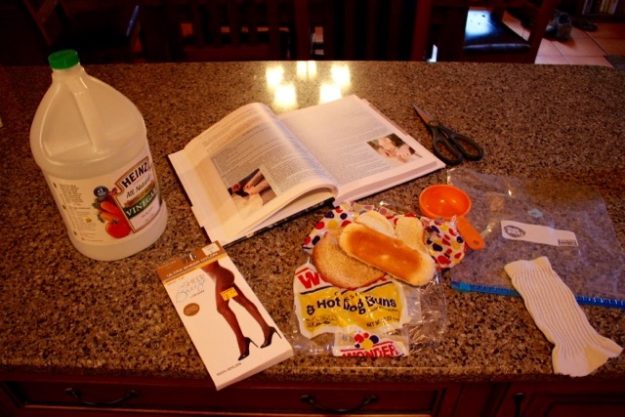
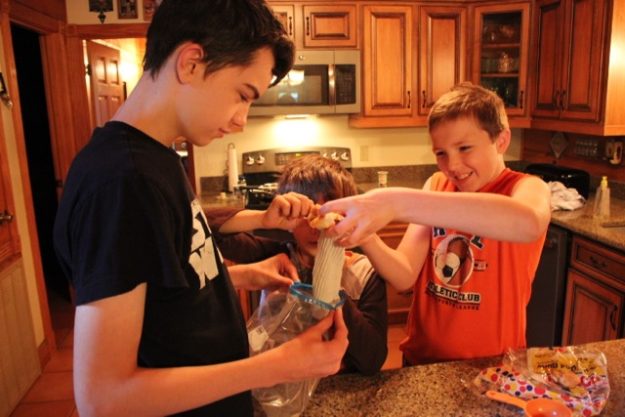
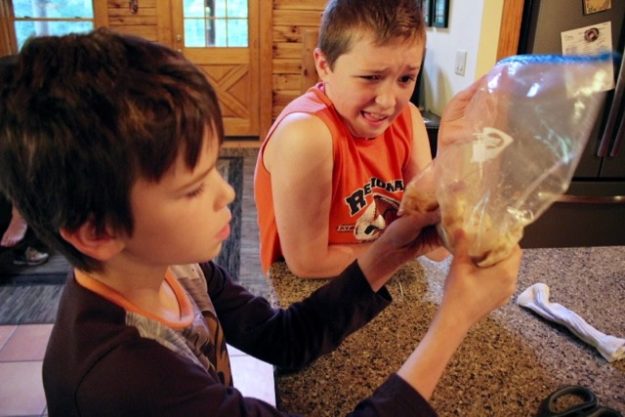
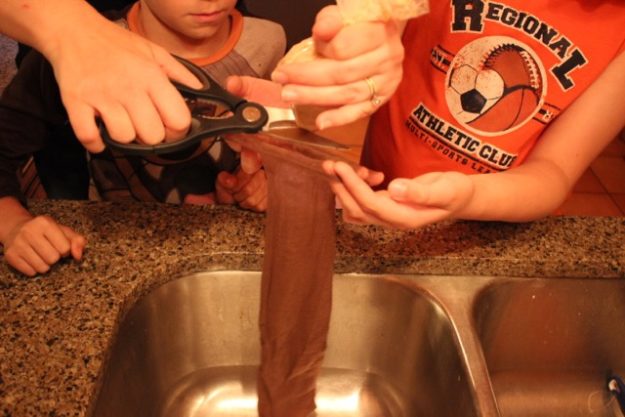
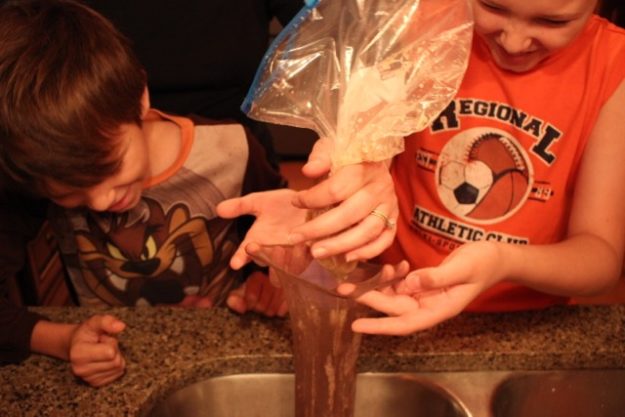
I’ll never look at panty hose the same way again.
In past years, I kept putting off science to the end of the day, but then we’d never get around to it because I never had the energy or willpower to pursue it after finishing up our core work. I decided this year to move science up to our morning time, and we have all really REALLY enjoyed kickstarting our days with science! (I should have done this years ago!)
Science in the Scientific Revolution has short lessons and fairly simple science investigations. (You can download a sample at Berean Builders. Even though we didn’t finish all of Science in the Ancient World last year, we’ve been able to pick up with this book without any problems!)
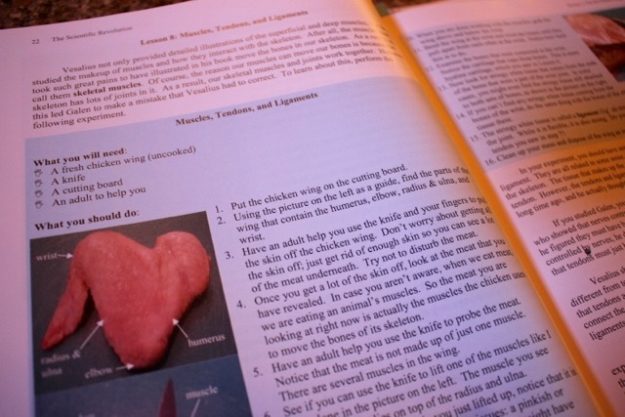

Another activity that’s working better than I had anticipated is learning to draw the USA from memory using Draw the USA. Our sixth grader can already draw 14 states from memory, and our 3rd grader can draw 7.
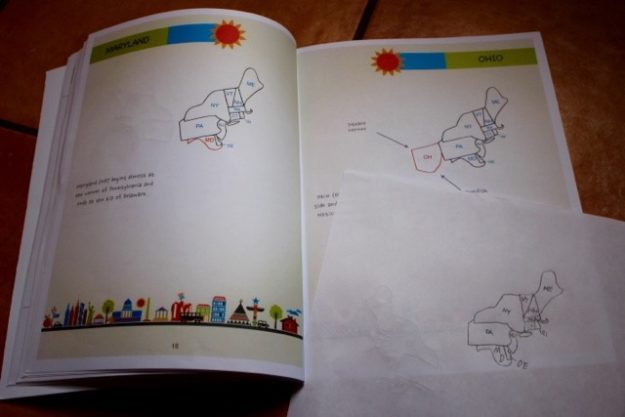
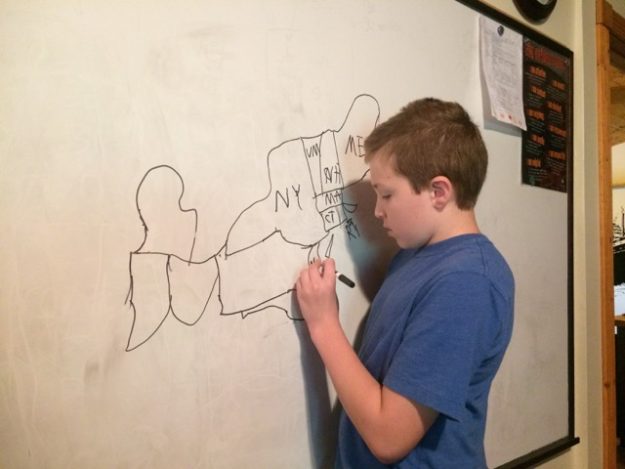
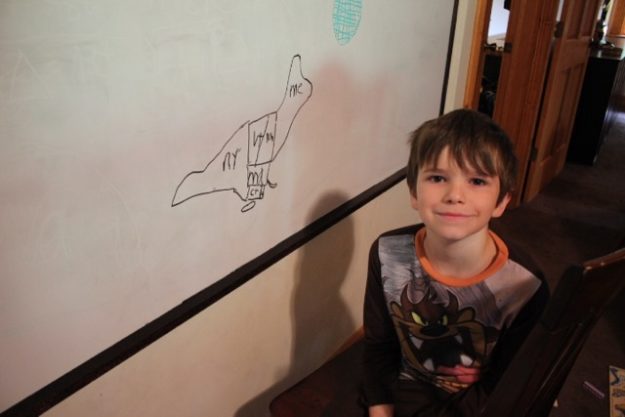
Starting out, we drew the first four states while looking at the instructions in the book. After we were able to draw those from memory, we added a few more. (The weekly routine is sort of like this: Introduce 4-5 new states at the beginning of the week. Practice drawing them daily while referencing the book. Attempt to draw from memory at the end of the week.) This daily map-practice routine has been simple, quick, enjoyable, and effective.
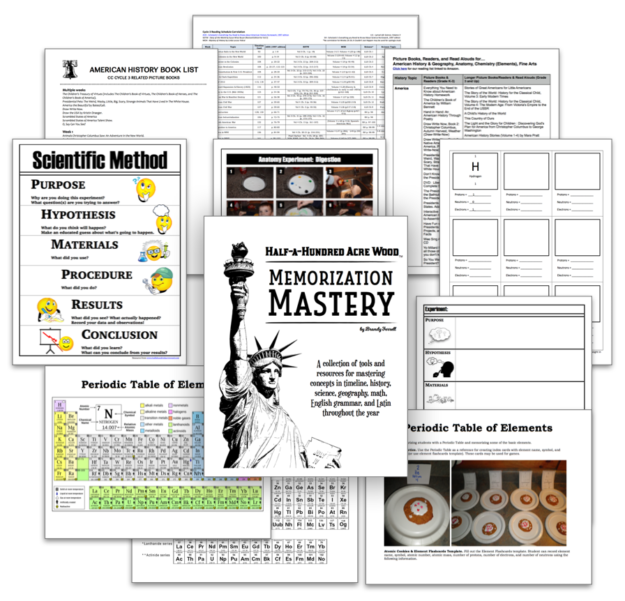 Our children also recite their memory work each day. I’m afraid we don’t do anything exciting here. By now, they’ve heard the memory work songs a bajillion times and have practiced the memory work a bajillion ways (it’s our 3rd time through this cycle), so we just keep it simple and add extra practice if needed using things like Latin flashcards or timeline thumbnails. (See our Memorization Mastery packet for tools we’ve used in the past to help with memorization.)
Our children also recite their memory work each day. I’m afraid we don’t do anything exciting here. By now, they’ve heard the memory work songs a bajillion times and have practiced the memory work a bajillion ways (it’s our 3rd time through this cycle), so we just keep it simple and add extra practice if needed using things like Latin flashcards or timeline thumbnails. (See our Memorization Mastery packet for tools we’ve used in the past to help with memorization.)
I thought I’d mention…. before we have our morning time, we read and discuss the Bible over breakfast. (We’re currently using Long Story Short as we read through portions of the Old Testament.)
Morning Time Loop Schedule
Our loop schedule consists of other lovely things we’d like to do on a weekly (or sort-of weekly) basis. You can reference our loop schedule and learn about what a loop schedule is here. I wanted a simple art and music study, so we’re using Can You Hear It? by William Lach…
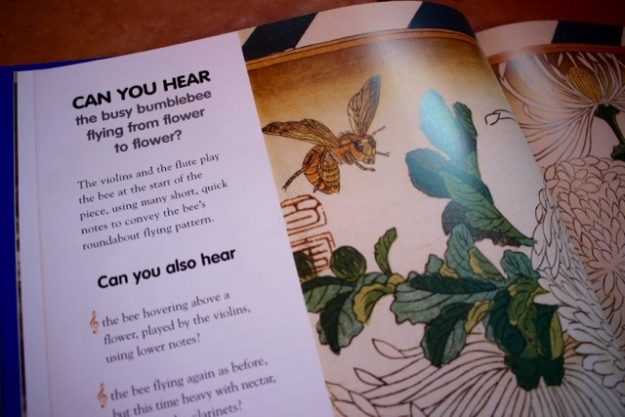
In our loop schedule, we have two weeks (or rows) assigned to each page in this book. The first week, we listen to the music cd and study the corresponding picture. The second week we listen to the music and study the picture again as we attempt to sketch or imitate the artwork. (We have not yet sketched/painted/imitated this artwork because we just completed the first week/row of our loop schedule.)
The next thing on our loop schedule is a poem, miniature biography, or tall tale from William Bennett’s Children’s Treasury of Virtues. Our first week was a poem about Columbus by Joaquin Miller.
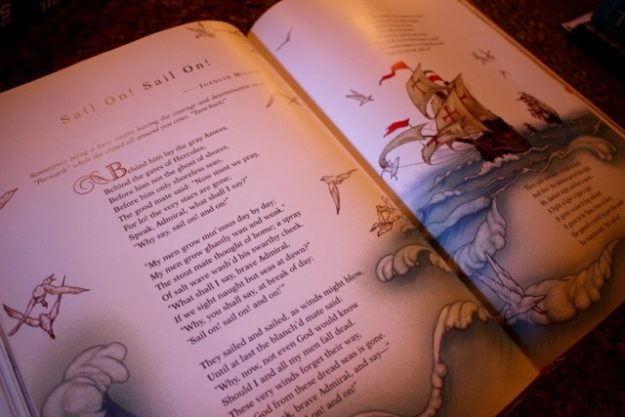
The Children’s Treasury of Virtues is a three-part book that includes Bennett’s earlier individual works aimed at young children: The Children’s Book of Virtues, The Children’s Book of Heroes, and The Children’s Book of America. Our reading plan calls mainly upon reading selections from The Children’s Book of America. So, if the price skyrockets, search for each of the individual works (or just search for the Book of America to have the majority of the readings which correlate with U.S. History). If you end up with a different version of this book, or if you’d like to see additional pictures of the inside click here.
Drawing. So… I intended that we would correlate our drawings from Draw Write Now (Book 2, Book 3, and Book 5) or Draw and Write Through History (Pilgrims, Pirates, and Patriots and The 20th Century) with history sentences…

…but instead the boys are drawing other things from these books (like pronghorn deer). Although this burst my bubble a bit, the point is for them to practice drawing, so I’ve decided I’m good with whatever they want to draw. (But still… the Type A in me hopes to convince them to add some historical artwork to their IEW papers. heh.)
U.S. Presidents. I wanted to spend a little time reading about each President this year, so we’re reading about a couple of Presidents each week (or whenever we get around to it). We have a silly version (Presidential Pets)…
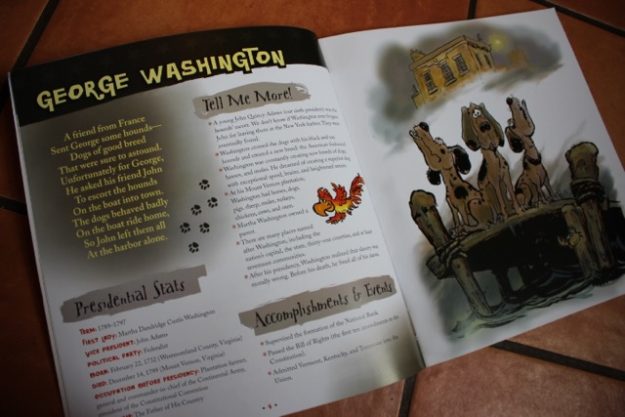
…and a comical version (Don’t Know Much About the Presidents).
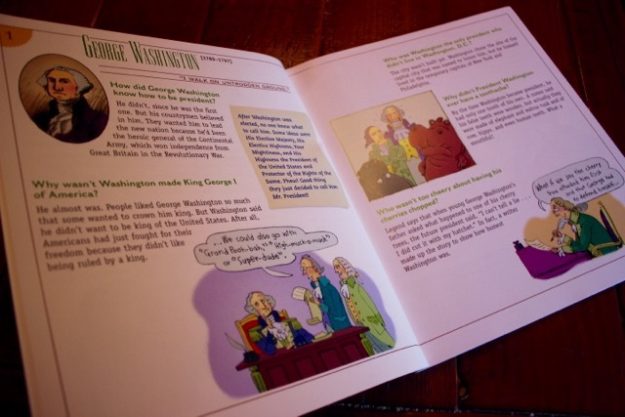
The boys enjoy both of these books – the first one highlighting the animals that have lived in the White House, and the second one with genuinely funny comical asides. (Although we’re not doing a study of the states this year, Don’t Know Much About the 50 States is a great book for learning interesting facts for each state, too!)
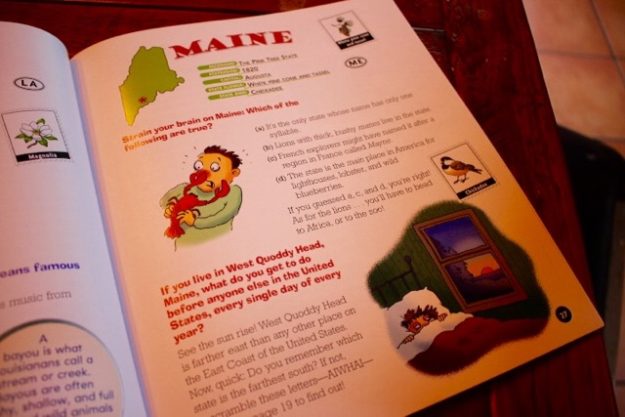
And that’s our Morning Time in a nutshell. (It takes about an hour.)
Core Work: Math & Language Arts
Math. We were one week into our school year, and I realized our original math plan was not going to work. First, our 3rd grader desperately wanted to work in Saxon 5/4. (Really? Okay. We’ll work in Saxon then.) Our 6th grader needed the extra practice provided in Saxon, so he is now working in Saxon 7/6 for his core work (with Life of Fred Decimals and Percents as an extra). Our 9th grader decided it would be best to use Saxon Algebra I. So… we’re all back to Saxon, and all is going fairly smoothly with math. (Although I enjoy math, our children are not really enthusiastic about it. I still would love to find a curriculum that adds beauty, wonder, and joy into math without sacrificing the skills and discipline I’d like them to build at the same time. If you have suggestions, feel free to jump down to the comments and let me know!)
What’s it look like? All of our children are working pretty much independently with math. (This is an advantage to using Saxon 5/4 and above.) I sit at the table with them so that I’m accessible if they run across any problems. If I’m busy working with a sibling, they circle the problem(s) that they don’t understand and ask me after I’m free. Because math is a fairly independent activity, I’m usually working with another student on spelling or English Grammar/IEW while the others are working on math.
Copywork. Our sixth grader is working in Script-n-Scribe Americana and our third grader is working in Poetry Penmanship.
Language Arts. We’re using Essentials and IEW for English grammar and writing/composition. Our 3rd grader is working on the same writing assignments as his older brother, which provides the added benefit of giving him something to present each week in his co-op class. He’s also learning some of the English grammar charts and how to analyze sentences using the first 3-4 analytical tasks.
We still use All About Spelling. As much as I would love to use the spelling lists in the Classical Conversations Essentials Guide, we’ve always defaulted to the program that has provided the best results for our children. (We have used several different programs over the past few years, and I have settled on teaching them using bits and pieces of various programs (primarily All About Spelling and Spell-to-Write-and-Read). I pull the overall structure of our spelling lists and use several tools from All About Spelling, but I use the techniques and suggestions in Spell-to-Write-and Read rather than using the spelling tiles (which drive me crazy).
We’re about to enter two weeks of intense drama practice for our annual fall Homeschool Dramatic Society performance. Because of all the driving involved, we’ll be listening to memory work songs quite a bit. This has always been one of the best ways for our children to learn memory work.
Note: Usually, our children (up to 6th grade) are “done” with their school day by 1pm or 2pm. Our Challenge student is usually completely done by 3pm, but sometimes he has to work until 4 or 5pm. But learning is a lifestyle, not a checklist. That means we’re constantly in pursuit of some learning activity. For instance, we like to dig out past studies like this one on the American Revolution.
Read Alouds. I (or my husband) usually reads a book aloud at bedtime. We thoroughly enjoyed Witch of Blackbird Pond! We interrupted our reading of Johnny Tremain temporarily to read Mimosa: A True Story by Amy Carmichael in preparation for an upcoming dramatic production (about Mimosa’s life) in which two of our boys are performing this month in Cookeville, TN. We’ll be hopping back into Johnny Tremain this week!
Other things?
Sometimes our 9th grader leads his brothers in his Challenge 1 experiments. It’s so much fun to watch him teach his younger brothers!
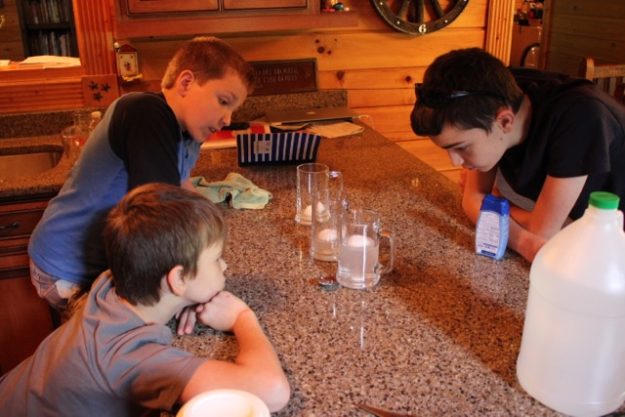
And sometimes I catch one of them playing with things like Periodic Table Tiles…
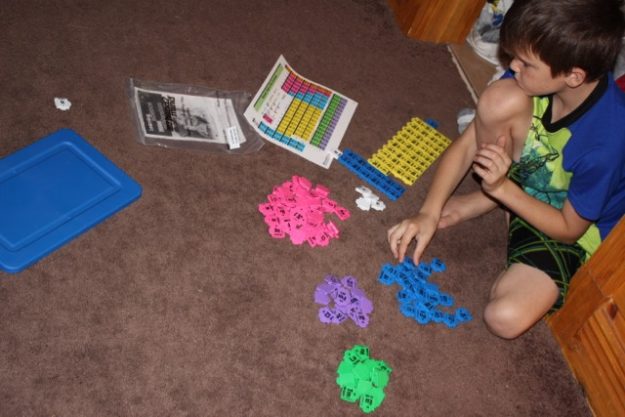
The boys love playing games. This week, Ticket to Ride and Lewis & Clark were in the line-up (along with Twister and Star Wars Monopoly). They enjoy Lewis & Clark, but there’s a simpler version that was later released called Discoveries. It’s still on our wishlist! 🙂
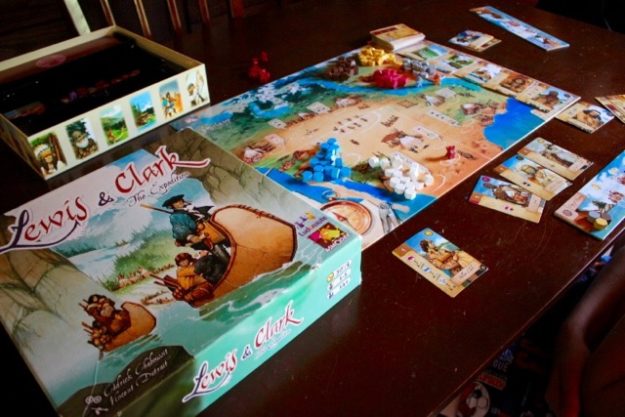
And that’s a sneak peek at our first few weeks this year! If you have any questions about how we “do homeschool” or how our homeschool room is organized, please feel free to give us a shout!
